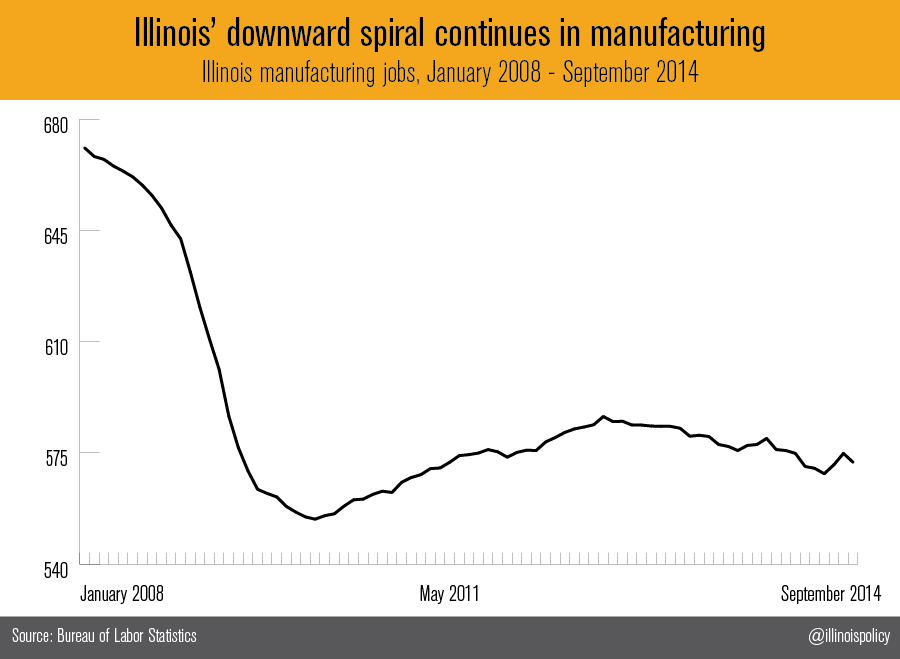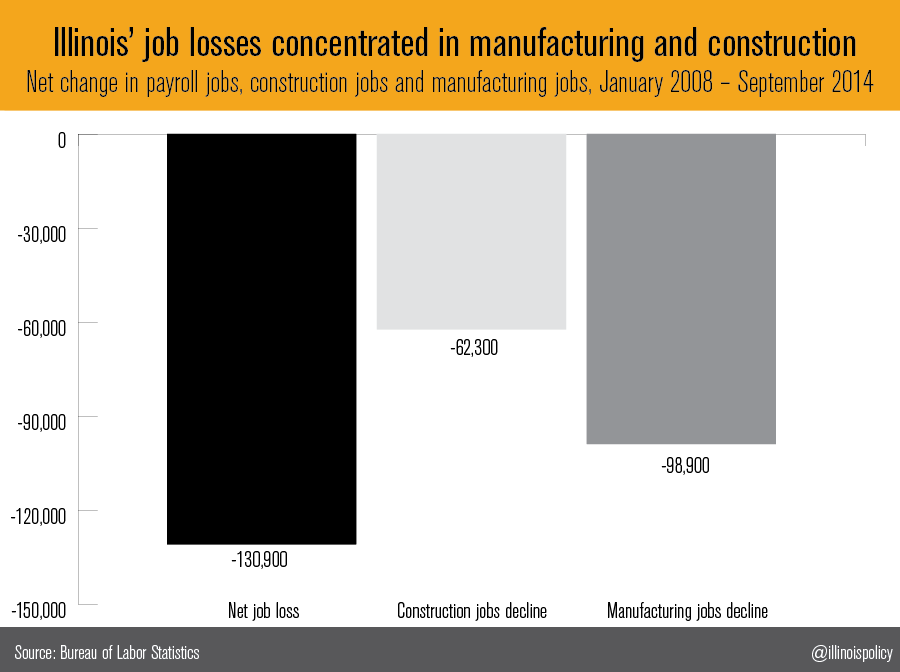Manufacturing a comeback
Illinois’ economy needs a real comeback to get the state back to work. To address what is needed for a sustainable recovery, policymakers should look at one of Illinois’ primary pain points: the manufacturing sector. The recession caused Illinois to lose 116,800 manufacturing jobs from January 2008-January 2010. After that, Illinois began a weak manufacturing...
Illinois’ economy needs a real comeback to get the state back to work. To address what is needed for a sustainable recovery, policymakers should look at one of Illinois’ primary pain points: the manufacturing sector. The recession caused Illinois to lose 116,800 manufacturing jobs from January 2008-January 2010. After that, Illinois began a weak manufacturing jobs recovery which lasted until September 2012. However, for the last two years, Illinois has been losing manufacturing jobs again.
Over the course of the recession era, Illinois’ job losses have been aggregated in the goods sector, which is the area furthest from recovery. There are 98,900 fewer manufacturing jobs and 62,300 fewer construction jobs in Illinois than when the recession began, for a net loss of 161,200 jobs in the goods sector.
Compared to the rest of the Midwest, Illinois has lost more goods-sector jobs than any other state, and is second worst in terms of percentage decline in goods-sector jobs.
Illinois’ service sector has held up much better than the goods sector, and has recovered to pre-recession jobs levels. However, the service sector is also weak compared to the rest of the Midwest, beating out only Ohio and Michigan in percentage terms.
The long-term trend in the U.S. economy has been toward a service-sector economy and away from a goods-sector economy. However, that doesn’t mean that policies should exacerbate the relative decline of the goods-producing sector.
For states like Illinois, manufacturing and construction will always be important. Policy leaders should recognize the pain that these sectors are dealing with, and address it through policy solutions.
The state should work to get energy production underway in southeast Illinois, which will unlock thousands of new jobs in construction.
Another policy solution is to reform Illinois workers’ compensation laws. Under current law, construction and manufacturing companies are often held liable for worker injuries even if those injuries do not occur on the job.
Illinois localities that want to embrace job creation should be allowed to prohibit forced-unionism within their jurisdiction. As it is, workers statewide are forced to join unions as a condition of getting a job, a practice which is a barrier to entry for low-skilled workers and a disincentive for manufacturers to locate in Illinois.
For Illinois to make a real comeback, more Illinois workers need to have the opportunity to build things again. But policy-induced hindrances, including workers’ compensation, costly unemployment insurance, forced-unionism, minimum wage and high property taxes, give businesses the incentive to either automate their production facilities or move them out of state.




